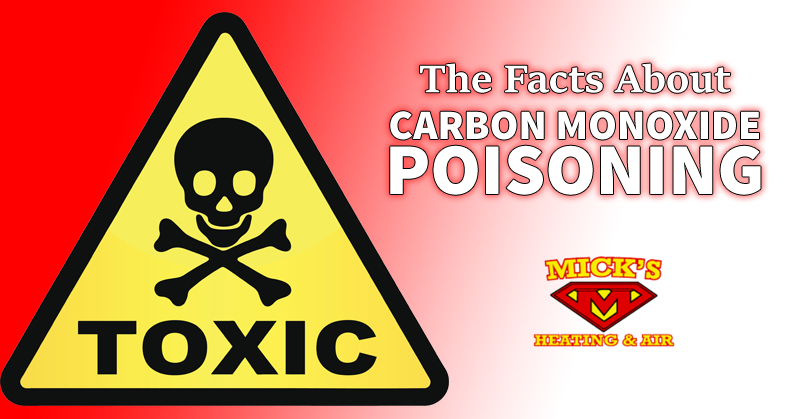Breathing traces of carbon monoxide in an outdoor environment is unlikely to cause you any trouble. But if leaks occur in indoors carbon monoxide concentrations can easily surpass the danger threshold. Carbon monoxide can make you sick and in the most extreme cases can even put your life in jeopardy.
Where Does Carbon Monoxide Come From?
Carbon monoxide is a byproduct of fossil fuel combustion, and any appliance or vehicle that runs on gasoline, natural gas, propane or oil will produce it.
As long as it is successfully vented carbon monoxide is relatively harmless, and of course ventilation systems are always included with furnaces, boilers and stoves that run on gas or oil. But when leaks occur in these venting systems, or when un-vented sources of carbon monoxide emissions are used indoors instead of outdoors, carbon monoxide can quickly become a significant threat.
What to Do in a Carbon Monoxide Emergency
When carbon monoxide is around you won’t be able to see it, smell it or feel it against your skin. But its side effects will soon become obvious: drowsiness, persistent fatigue, headaches, blurred vision, shortness of breath, nausea and an inability to focus or concentrate are some of the major indicators of carbon monoxide exposure—followed by loss of consciousness if exposure continues for too long.
If you have a carbon monoxide detector (as you should) it will sound and let you know if carbon monoxide is leaking most of the time. Occasionally, however, low-level leaks may slip below your detector’s radar, in which case you’ll only know a leak is happening if people become ill.
Ideally, if a carbon monoxide leak is revealed or suspected you should:
- Organize a rapid but orderly evacuation of the home or building.
- Open every door and window to vent the gas.
- Shut off all power and close the fuel lines on the equipment suspected of causing the leak.
- Place a call to your HVAC contractor or your gas company and ask them to send someone immediately to check out the situation.
However, it you or anyone is showing signs of severe illness you shouldn’t take any chances. In that instance you should get everyone out of the building as quickly as possible and call 911 to report the event.
Strategies for Preventing Carbon Monoxide Leaks
Preventive maintenance of fossil fuel burning appliances and equipment is the best way to head off all kinds of trouble, including carbon monoxide leaks. An HVAC technician should he called in to examine your entire system on an annual basis, including any equipment that runs on gas or oil. If you have other gas- or oil-burning equipment arrange for trained technicians to inspect that regularly as well.
As for non-venting sources of carbon monoxide emissions (automobiles, lawn mowers, gas generators, gas grills, etc.), you should only use them outdoors and never in partially enclosed spaces or near your home.
Don’t Worry about Carbon Monoxide, Just Call Mick’s Heating and Air Instead
For more than a quarter century Mick’s Heating and Air has been serving satisfied customers throughout Orange County California. If you live in this area and your HVAC equipment has not been inspected recently, please give us a call us to schedule an appointment for a maintenance visit.
We specialize in stopping trouble before it starts, and if we discover you are at risk for a carbon monoxide leak we will fix the problem and let you know what steps you need to take to eliminate future risk.
Follow us right here for tips that can save you money and advice on how to keep your HVAC equipment running smoothly and safely.

